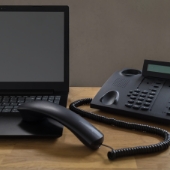Keep your laptop battery in top shape with these smart tips
 Whether you’re on a Windows or macOS device, understanding your battery’s health can save you from surprise shutdowns and frustrating slowdowns. These smart habits will help boost your laptop battery’s life.
Whether you’re on a Windows or macOS device, understanding your battery’s health can save you from surprise shutdowns and frustrating slowdowns. These smart habits will help boost your laptop battery’s life.
How to check battery health on Windows devices
Windows provides a variety of diagnostic tools, from straightforward software reports to in-depth hardware analyses, making it easier to monitor and manage battery performance.
The deep dive: Windows Battery Report
The Command Prompt offers one of the most effective ways to analyze your power consumption in detail. Through this often-overlooked feature, you can generate a comprehensive HTML file known as the Battery Report. It provides valuable insights into your battery’s performance, its current charge capacity, and how that capacity has evolved over time.
To access the Battery Report, take these steps:
- Press the Start button and type “Command Prompt”.
- Open the application and type this command: “powercfg/batteryreport”
- Press Enter.
- Navigate to your user folder (usually C:\Users\YourUsername\) to find the battery-report.html file.
When you open this file in a web browser, compare the Design Capacity against the Full Charge Capacity. A significant gap between these two numbers indicates that the chemical capacity of the battery has degraded, and it may be nearing the end of its life.
The manufacturer route: proprietary apps
Many modern laptops have built-in manufacturer-specific management tools that allows users to check their device’s battery health:
- Dell SupportAssist On-Board Diagnostics
- HP Support Assistant
- Lenovo Vantage
- MyASUS
Simply follow the prompts provided by these built-in diagnostic tools to check your battery’s health and performance.
The hardware level: BIOS/UEFI check
You can check your laptop’s battery health before Windows loads by accessing the BIOS or UEFI firmware, which is the system that runs when you first turn on your computer. Use this method if your laptop won’t boot correctly or if you simply need a quick status update without logging in to the operating system.
Here’s how to do it:
- Restart your laptop.
- As it starts, immediately tap the relevant setup key (commonly F2, F12, Del, or Esc) to enter the BIOS/UEFI menu.
- Once there, use the arrow keys or mouse (if it’s a UEFI setup) to navigate to a Battery Health section. It’s typically found under the Overview or General menu.
- In the Battery Health section, you’ll find a summary of your battery’s condition, often categorized as Excellent, Good, Fair, or Poor.
How to check battery health on MacBooks
Apple integrates battery monitoring directly into the user interface, making it easy to gauge its performance.
System settings status
To quickly check your battery’s current capacity compared to its original state, simply:
- Open the Apple menu and select System Settings.
- Click on Battery in the sidebar.
- Select the “i” icon next to Battery Health.
A window will appear displaying your battery’s status as either Normal or Service Recommended. You’ll also see the maximum capacity percentage, which indicates how much charge your battery can hold relative to when it was new.
Understanding cycle counts
Every MacBook battery is designed with a finite number of charge cycles, typically around 1,000. Here’s how you can check yours:
- While holding the Option key, select the Apple menu.
- Select System Information.
- Click Hardware then Power.
- Locate the Cycle Count under the Battery Information header.
If your cycle count is nearing 1,000, your battery is approaching its maximum rated lifespan.
Signs your laptop battery needs a replacement
Diagnosing battery issues isn’t just about monitoring software. Your laptop’s hardware often provides clear physical warnings before the battery reaches total failure:
- Swelling or bulging: If your trackpad cracks, your keyboard bulges, or the laptop wobbles on a flat surface, it’s likely due to a swollen battery. If this is the case, have it checked by a professional immediately, as it’s a serious fire hazard.
- Overheating and thermal throttling: If your fans are running at maximum speed constantly and the chassis is hot to the touch, the battery may be generating excess heat due to internal resistance.
- Sudden power loss: If the laptop shuts down as soon as it’s unplugged from the charger, the battery cells have likely failed entirely.
- Erratic charging: A battery that stays stuck at a low percentage or takes an unusually long time to charge often indicates an internal defect.
Strategies for extending your laptop battery’s lifespan
Laptop batteries naturally degrade over time, but you can take steps to maximize their lifespan and keep them performing longer.
Use reliable chargers
Using cheap, third-party chargers can introduce inconsistent voltage that harms battery cells. Stick to the original manufacturer’s adapter or opt for high-quality gallium nitride (GaN) chargers. GaN chargers run cooler and are more efficient than traditional silicon adapters, providing clean power delivery.
Manage software usage to conserve battery
The harder your laptop works, the faster its battery drains and deteriorates. To maximize battery life, consider these adjustments:
- Screen brightness: The display is often the biggest power drain. Dimming it can significantly reduce power consumption.
- Refresh rates: If your device has a 120 Hz or 144 Hz display, switch to 60 Hz when you’re not gaming or editing videos. Doing so conserves energy without affecting basic tasks.
- Software updates: Regularly update your BIOS and drivers. Manufacturers often release firmware patches designed to improve power management and efficiency.
Extend battery health with the 20-80 rule
To prolong your laptop’s battery life, avoid leaving it plugged in for extended periods after it reaches a full charge, as this puts unnecessary stress on the battery cells. Conversely, regularly letting the battery drain to 0% can also cause damage. Maintain optimal battery health by keeping your laptop’s charge level between 20% and 80%.
Whether your laptop battery is failing or you need help managing multiple devices, our IT specialists will keep your tech running seamlessly.
 If you find your laptop battery draining too quickly, it’s time to assess its health and performance. We’ll help you identify warning signs and provide advice to improve its longevity and efficiency.
If you find your laptop battery draining too quickly, it’s time to assess its health and performance. We’ll help you identify warning signs and provide advice to improve its longevity and efficiency. Your laptop’s battery won’t last forever, but there are several ways to extend its lifespan. In this article, we’ll walk you through checking your battery’s health on both Windows and Mac and offer tips to maintain its performance.
Your laptop’s battery won’t last forever, but there are several ways to extend its lifespan. In this article, we’ll walk you through checking your battery’s health on both Windows and Mac and offer tips to maintain its performance. VoIP isn’t the future — it’s the now. Discover how internet-based phone systems can streamline your small business, slash communication costs, and keep your team connected anywhere.
VoIP isn’t the future — it’s the now. Discover how internet-based phone systems can streamline your small business, slash communication costs, and keep your team connected anywhere. Still using a traditional phone system for your business? You might be missing out. This post breaks down why VoIP is now a must-have for small businesses, and how it can help you work smarter, not harder.
Still using a traditional phone system for your business? You might be missing out. This post breaks down why VoIP is now a must-have for small businesses, and how it can help you work smarter, not harder. There was a time when advanced phone systems were only something large corporations could afford. But that’s no longer the case. VoIP has evolved into an accessible, affordable communication solution for businesses of all sizes, especially smaller ones. In this article, we explore how small businesses can use VoIP to cut costs, increase flexibility, and access enterprise-level features without the enterprise price tag.
There was a time when advanced phone systems were only something large corporations could afford. But that’s no longer the case. VoIP has evolved into an accessible, affordable communication solution for businesses of all sizes, especially smaller ones. In this article, we explore how small businesses can use VoIP to cut costs, increase flexibility, and access enterprise-level features without the enterprise price tag. Microsoft is celebrating 40 years of Windows with something more ambitious than cake and nostalgia — it’s reinventing its flagship OS from the ground up. At Ignite 2025, the tech giant laid out its boldest vision yet: a Windows deeply integrated with AI and built for the age of intelligent agents.
Microsoft is celebrating 40 years of Windows with something more ambitious than cake and nostalgia — it’s reinventing its flagship OS from the ground up. At Ignite 2025, the tech giant laid out its boldest vision yet: a Windows deeply integrated with AI and built for the age of intelligent agents. At Ignite 2025, Microsoft officially announced that AI will be a core component of Windows 11. Upcoming updates to the OS will introduce integrated AI agents, enhanced Copilot features, and expanded cloud capabilities, all designed to create a smarter, more connected workspace. These innovations highlight Microsoft’s vision of an AI-driven Windows experience while making sure users maintain full control over their digital environment.
At Ignite 2025, Microsoft officially announced that AI will be a core component of Windows 11. Upcoming updates to the OS will introduce integrated AI agents, enhanced Copilot features, and expanded cloud capabilities, all designed to create a smarter, more connected workspace. These innovations highlight Microsoft’s vision of an AI-driven Windows experience while making sure users maintain full control over their digital environment. Windows just turned 40, but Microsoft is far from done reinventing the OS. At Ignite 2025, the company unveiled a smarter, more intuitive Windows 11, packed with intelligent AI agents, deeper Copilot integrations, and powerful cloud features. It’s a fundamental shift in how Windows works, feels, and helps users get things done.
Windows just turned 40, but Microsoft is far from done reinventing the OS. At Ignite 2025, the company unveiled a smarter, more intuitive Windows 11, packed with intelligent AI agents, deeper Copilot integrations, and powerful cloud features. It’s a fundamental shift in how Windows works, feels, and helps users get things done. Imagine a customer walks up to your physical store in the middle of the afternoon, tries the door, and finds it locked. Frustrated, they head straight to your competitor. The same thing happens when your website goes down. Customers won’t wait around for a page to load, and that potential sale disappears in seconds. You don’t need to be a tech wizard to prevent this. Here are the six most common reasons your digital doors might slam shut and simple ways to keep that from happening.
Imagine a customer walks up to your physical store in the middle of the afternoon, tries the door, and finds it locked. Frustrated, they head straight to your competitor. The same thing happens when your website goes down. Customers won’t wait around for a page to load, and that potential sale disappears in seconds. You don’t need to be a tech wizard to prevent this. Here are the six most common reasons your digital doors might slam shut and simple ways to keep that from happening.